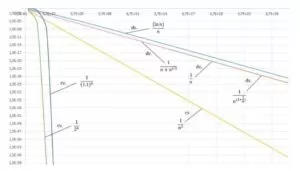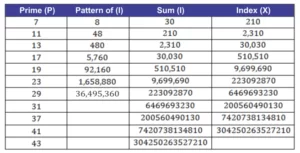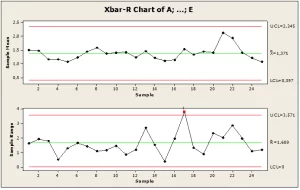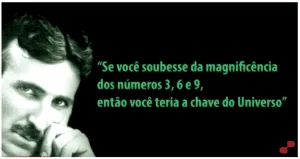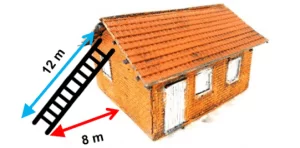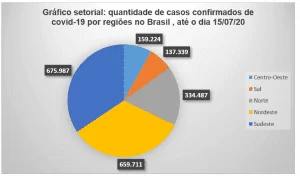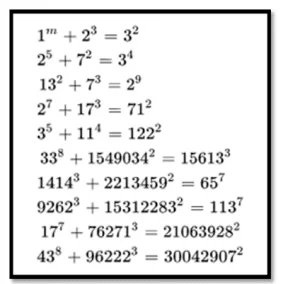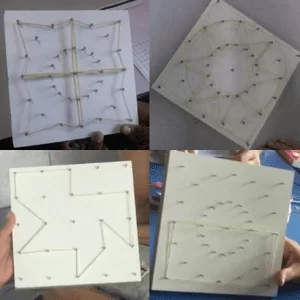MOREIRA, Miriam Gerheim [1]
MOREIRA, Miriam Gerheim. Mathematical education: Digital Learning Tools. Multidisciplinary Core scientific journal of knowledge. 07 Edition. 02 year, vol. 03. pp 154-165, October 2017. ISSN: 0959-2448
SUMMARY
The present work presents a reflection that aims to evaluate the usage of digital tools and practices, theories presented in the course of discipline. as didactic resource in the teaching and learning of mathematics in the classrooms of the elementary and secondary education. To fulfil this objective, will be bibliographic studies, which report the application of tools, as well as the survey of reports with teachers and students for the evaluation of these processes in public schools.
Keywords: photo, digital resources, Math Education, Didactics.
INTRODUCTION
One of the main challenges of mathematics education must be capture the interest of students and thus motivate your own experience with math. For decades, the authors propose the recreational mathematics through playful games, digital tools, smartphones, among others. The work has been providing material to try to seduce mathematically. Thus, the intention is to facilitate the pleasure of thinking and have a personal challenge to solve a problem situation. In addition, it is expected to help in the search for solution in improving the quality of the teaching-learning process.
It is important to discover the mathematical functionality and is therefore extremely relevant to use certain tools, that can be developed in individuals, this perception and, even, the enchantment by mathematics. In this sense, built the enchantment by learning the reasoning logico, obtain notions of space, provide elements so that individuals can make their own decisions objectively and assertive, using the principle of reasonableness and likelihood.
The momentum of the use of digital tools in education, is the fact that the student encounters with various tasks, showing a much more positive emotional disposition. This will result in the realization of significant learning.
The aim of this work is to present a series of activities with digital tools that can be used to build the teaching of mathematics in primary and secondary education. With this research, we can focus on a way of understanding the teaching-learning process, which is the students ' mathematical construct. In particular we will:
-Provide guidance and resources that can be brought to the classroom.
-Improve social skills and promote a proper communication.
-Supporting the participation of students, natural and spontaneous way, listening to them and providing students with challenging activities to encourage the development of creativity and invention through the reconstruction of problematic situations.
-Identify the advantages of using digital tools, practices, and other resources in math class.
CONSIDERATIONS ON THE TEACHING OF MATHEMATICS AND INTERVENTION PROPOSAL.
The teaching of mathematics for many years has been reduced to a required curricular content to be applied inside the classroom. Society and education evolved long before getting to the point of believing that math is not just a content to be explored in the classroom. Mathematics is also a way to explore some abilities of the student, giving importance to him and taking him to think, Act and streamlining. For Grado (2000), teachers should adapt to new times and new generations that are to learn, enjoy and wonder about all kinds of problems that arise in daily life.
Following the idea of Nietzsche (1999/1873), one of the purposes of knowledge passes from the sphere of recognition — that is, find something known in the strange, the different, in that causes discomfort to get out of your comfort zone as a means of eliminating differences and, with it, matching unequal – to the sphere of invention, of logical reasoning. Meet is to invent, open possibilities for new discoveries, to a new world, to be critical, to see the world in different ways for each context. Know that everything changes all the time. Learning is not out of something you don't know to another in which one learns to know/know, i.e. learning content. Learning is the invention of the self and the world. Learn is to invent new directions and not repeat the data already senses (KASTRUP, 2005). Learning is not only recognize a certain condition of belonging to the world of existential and life-related entanglement, but rather face them.
Therefore, as pedagogical intervention in this work, I propose, the whet the curiosity to digital media using common tools among youth, taking into account the learning as non-mechanistic. In order to stimulate learning so interested, seeking positive attitudes in relation to mathematics and learning, facilitating the development of the curriculum and encouraging mathematical thinking, the active power, creative and collaborative learning.
Through digital tools professor can build with your student a more improved mathematical knowledge, developing your logical reasoning, independent thinking, the investigative spirit, critical and creative, as well as facilitating the notion of quantity, measures, weights, sequels, time, etc.
For example, to take a picture by the smartphone, the individual knowledge of photographic composition, that is, you have to have a notion of fractions (shutter speed), the area of the circle (opening of the diaphragm of the lens), Fibonacci sequence (to have a composition harmonious), among other mathematical concepts.
If we want the student learn trigonometry in high school, it may be important to introduce the idea of angles, using the example of "selfie". Arousing the interest of the student to the importance of the content on the quality of the picture depends often angular positioning of the photographer and the supplied angle lens (lenses). Also taught in photographic composition.
According to the PCNs, math assumes role of fundamental importance because it allows solving problems of everyday life, in addition to working as a key instrument for the knowledge of other areas, interfering heavily in the formation of intellectual capacities, in the structuring of thought and in streamlining of deductive reasoning. There is no true citizenship without a minimum domain of mathematics. Is of fundamental importance, for the exercise of citizenship, the individual know calculate, reason, argue, create chances and treat information. We can say that few modern sciences can be taught and learned without the aid of mathematics.
Today, mathematics is seen by many researchers as one of the pedagogical disciplines that are present in an individual's life, whether in the numeric aspect or not. In addition to being instrumental in the human adjustment to the environment in which he lives, in order to soften their struggles to solve problems and give you a better condition to fully exercise your citizenship, she also assists in habits, attitudes, and skills development even in changing a behavior, benefiting the individual.
LEARNING DISABILITIES: RELATIONSHIPS BETWEEN DISLIKE AND DON'T LEARN MATHEMATICS
According to several authors, the use of playful tools (and digital) in class is of great importance. The use of digital tools, such as applications, pictures, experiments, video tutorials, among others, serve to reinforce the content applied and even influence the student to understand the importance of the matter and, therefore, minimize the Mathematics for students.
According to Campos (1996), Freud explains, through the evolution of personality, that the psychic energy of libidinous nature directly influences the behavior of human beings, the same way that there is a physical energy that controls the natural phenomena. That is, if the person doesn't feel physical or mental wellbeing by performing an activity he tends to repel, refuse and even reject.
One of the hypotheses that can be lifted from Freud's theory is that the student with difficulties relating to mathematics with your everyday activities tends to avoid the content, not to make sense to him. Chamie (1990) conducted a survey and through the students ' testimony, noted that many "hate" the matter or claim that they can't understand it. This research noted that students who thought the article "difficult" and "boring" not interested in learning it and thus had difficulty. The study still revealed that this difficulty is regarded as natural, which ends up causing insecurity and disgust to the content taught in the classroom.
In accordance with the National curricular parameters, the math can contribute to ethics training, if direct learning for the development of attitudes and behaviours, in order that they can work the mathematical content. Thereby, directs them to the everyday, to the importance of the matter.
If you look at the research of Chamie (1990), the National curricular parameters of 1998 and the Freudian theory, let's realize that, first, we need to demystify what was worshipped for years about the math for that, so the student can open up and propose trying to learn. He will reason rather than memorize to get notes, and, through the reasoning of the student, the teacher can help students to face the real difficulties of learning, clearing up questions and proposing issues for achieving the expected results.
According to Papert (1988), some people have phobias of mathematics and fear that this work as intellectual development, limiter and the student have a negative self-image and, thus, making the learning of content. Mathematics has a fundamental role in shaping the individual.
According to the National curricular parameters (1997).
[…] mathematics is an important component in the construction of citizenship, to the extent that society uses increasingly of scientific knowledge and technological resources, of which citizens should take ownership of. Learning in mathematics is tied to understanding, that is, to the apprehension of the meaning; Learn the meaning of an object or event requires seeing it in its relations with other objects and events. Educational resources like games, books, videos, calculators, computers and other materials play an important role in the teaching learning process. However, they need to be integrated into situations that lead to the exercise of analysis and reflection, ultimately, the basis of mathematical activity. (PCNs, 1997, p. 19)
According to Bongiovanni, (1990), the math is present in the lives of individuals and, as the years go by, it becomes even more present, since we need to perform calculations, deal with geometric figures, logic etc. Andrini (1989) emphasizes the importance of the study of mathematics in the lives of individuals, as this allows better know the reality in which you live, assist in the Organization of the reasoning and provide the great discoveries.
To analyze the great historic achievement, what determined and determines the balance of Nations, enabling the conquest and colonization, has mathematical basis, via the so-called technological progress (D ' AMBROSIO, 1986):
We cannot fail to mention the potential of mathematics to help in the solution of the problems of our development. But such potential felt by all, is increasingly in the area of mystery and, up to a certain extent, mysticism. (…) Mathematics absorbs investment portion and considerable Government Fund for scientific and technological development. (D ' AMBROSIO, 1986, p. 16)
The use of digital tools and practices in math content as didactic resource.
This section provides a set of principles that will permeate our work in education, within a constructivist framework and broadly. We also try to get features in which the digital tools and practices can be guided, to try to get some success in the classroom.
The teaching becomes more attractive and challenging. The purpose of the use of this tool is to show students that mathematics can be interesting and can develop skills that sometimes are hidden in the personality of the individual. We can also use this tool as a facilitator in the understanding of the mathematical content.
Photography, videos, games, applications, among others. Are another educational resource, like any other instrument to be incorporated in the classroom-a conscious and planned manner, with a previous programming, which takes into account all the factors of the teaching-learning process.
The main objective will be to awaken in the student the desire of discovery to become better in their social skills, motor skills, and affective language, among others. Using the math as an ally. For example: when taking a "selfie" to post on your social network, the student who has a better field of quadrants, angle, and even a basic knowledge of quantum physics, for a photographic composition and, consequently, will have a greater facility to handle the camera shoot, take "selfies", and "breaks" win many "likes", "tanned" and "followers". Math skills that require thinking, thinking the various possibilities of action, developing logical reasoning in order to investigate the best way to proceed, as well as establish conjunctures and justify them.
There are several conditions that must be taken into account in the planning of education. According to the national curriculum Parameters of Mathematics (1998), the appropriate teaching materials are the key to obtain the practical potential.
Therefore, observe all these aspects and meet the school's pedagogical proposal are items that, with proper planning, can help the teacher, favoring thus the success of the use of these resources.
Based on the thought of Piaget (1975), we can say that any normal student's ability to learn the content and even minimize the rejection of mathematics.
However, Piaget (1975) weaves some criticism to the teaching and learning of mathematics unleashed in traditional schools. Among the various criticisms, we highlight: the passivity of students, little experimentation, the difficulty on the part of students to establish logical relationships between everyday life and the content covered in the classrooms and the accumulation of information.
The teaching of Mathematics cannot be seen as "just another" discipline, since several studies have shown how important he is to the technological development, business, industrial, health, political and, especially, in the behavior of the individual.
Unfortunately, the math has been a "nightmare on school life" of a large number of students, which requires a greater commitment of the teacher. The school curriculum has forced teachers to work on top of obsolete elements and, consequently, hinders the understanding of the content by the students. In teaching geometry, students learn to study the Earth as if it were flat, based on ideas developed by Euclid of Alexandria, 300 years BC. Instead, it would be more interesting, for educators and students, if the geometry taught were from phenomena and pós-euclidianas findings, such as chaos theory, cloud formation.
This is our reality: the world is constantly changing, especially at the level of mathematics. While playing a video game, we have to calculate the space, checking geometric figures, calculate points, create strategies. The same happens with Facebook, theories of mathematics that can be applied in life and that are not taught in school, such as the prisoner's dilemma, queueing theory, statistics and data handling.
CONCLUSION
The causes of not liking mathematics may be associated students, considering your family income, your culture, your habits, your experiences and impressions of the mathematics. Each student has different skills and personalities, and it is up to the teacher to know recognize and work with each student differently, in order to perform effective intervention.
The National curricular parameters of Mathematics aims that children and young Brazilians have access to mathematical knowledge that allows them, in fact, your insertion, as citizens, in the world of work, social relations and culture, diminishing any and all inequality.
The use of digital tools and practices play an important role in education. The intention of the inclusion of technological resources in the classrooms is based on motivating/stimulate creativity, develop logical reasoning and mathematical foundations, in order to encourage and prepare students for the construction and study of mathematical models, as well as take student to apply the contents learned in the classroom to real-life usage.
Current and future teachers must work to motivate the students, in order to decrease the levels of failure. That's why we should let the tradition of only pass the programmatic content of the traditional way, with chalk and Blackboard, and introduce new methodologies, such as the proposal of this work, which advocates the use of resources, such as smartphones, cameras photographic, mathematical applications.
Previously, it was believed that the teaching of mathematics was an art and as such, hardly able to be analyzed, controlled and subject to rules. It is assumed that learning depends on the degree of domination of this art by professor and, at the same time, the willingness and the ability of students to be molded by the artist. Nowadays, we have several resources, including technology. However, not all schools are prepared to handle these features.
However, depends on the ability of understanding about the importance of mathematics and, especially, of demystifying concepts that start from the premise that the matter is "difficult" and "boring". We must propose, students, challenges, demonstrate, through photographs, videos, social networks, "selfies", games and everyday life, that mathematics has shape and, sometimes, life. We must understand the mathematics as a facilitator and not as something that is punitive and boring. Teachers should plan the goals with fun and motivating students.
The teaching materials are the means by which it seeks to achieve educational purposes. But, just the books, without a facilitator that give life to the content, does not cause the inefficiency in education decrease or that our students of today become adults committed with politics and with the actions of the world of tomorrow. If we wish to change the world, we have to make sure the student can acquire your own line of reasoning, we have to encourage you to be critical. We should not store the information that we have seen on tv and pass them as true because the journalist said. Should we form critical citizens, shrewd, with power to influence the generations and don't shut up by the analysis and interpretation of graphs and news. We must mobilise, revolutionize, create each time more comfort and wisdom through the new technologies that are emerging all the time. We must be aware that resources are finite, that politicians govern through democracy and collective good.
Therefore, if we want to change our education, we must also change the way to educate, give up prejudices and the orthodoxy of the chalkboard and textbook. Out of everyday life and immerse yourself in the "information age" or "digital era", without losing the charm of math is a challenge possible. Thus, even if with resistances and obstacles, we can gradually rebuild a new interpretation, not only in learning of middle and high school students, but in your own teacher training in mathematics.
REFERENCES
I'm glad, r. c. prior knowledge and meaningful learning of historical concepts in high school. PhD thesis presented at Universidade Estadual Paulista Julio de Mesquita Filho ". Marília, São Paulo, 2008.
-ANDRINI, a. Practicing math. Sao Paulo: Brazil, 1989.
Available at: http://www.webartigos.com/artigos/historia-da-Matemática-sala-de-aula/65416/#ixzz3oUnTyR1o
-AUSUBEL, D. P. The meaningful learning: the theory of David Ausubel. São Paulo: Moraes, 1982.
-BRAZIL. Ministry of education and culture/Fundamental education Secretariat. National curriculum parameters: Mathematics/Elementary Education Secretariat. Brasilia: MEC/SEF, 1998.
-CHAMIE, L. M. S. The relationship student-math: some of their meanings. Master's thesis. UNESP-Rio Claro, 1990.
-CAMPOS, d. m. s. Psychology of adolescence. Rio de Janeiro: Voices, 1996. Available at: http://portal.mec.gov.br/seb/arquivos/pdf/Matemática.pdf
-CARVAJAL, g. MORIN, j. David p. Ausubel-biography. 2007. Available at: http://gcarvajalmodelos.wordpress.com/2007/02/01/biografia/accessed: July 2012.
-D? AMBROSIO, Ubiratam. From reality to action? Reflections on education and mathematics. 3rd ed. São Paulo: Summus, 1986.
– ______. Mathematics Education? From theory to practice. 6th ed. Campinas: Papirus, 2000.
Available at: http://www.webartigos.com/artigos/historia-da-Matemática-sala-de-aula/65416/#ixzz3oUnCaeHE
-DANTE, l. r. Didactics of mathematics in preschool. São Paulo: Ática, 1991.
-FREIRE, pedagogy of autonomy: knowledge necessary for educational practice. São Paulo: Peace and Earth, 1996.
-GH, r. c. a. mathematical knowledge and the use of games in the classroom. Doctoral thesis. Campinas: Faculty of education, UNICAMP, 2000.
-MELO, g. n. de. Initial training of teachers for basic education: a radical overhaul. Vol 14, no. 1. London: Prospect, 2000.
-MOREIRA, M. A. The theory of aprenidzagem and your implementation in the classroom. Brasília: Editora da Universidade de Brasília, 2006.
– ______. Meaningful learning critical (critical meaningful learning). In: NOVAK, J.D., MOREIRA, M. A., VALADARES, A. J., CACHAPUZ, A. F., Beach, J. F., MARTÍNEZ, R. D., MONTERO, Y.H. and PEDROSA, M.E. meaningful learning theory: Contributions of the third international meeting on the meaningful learning. Penche, 2000. p. 121-134.
– ______. & MASSINI, and f. s. meaningful learning: the theory of David Ausubel. São Paulo: Moraes, 1982.
-NACARATO, A.; P, m. a. v. a. formation of the teacher who teaches math: perspectives and research from the investigations carried out by the researchers of the Wg7 SBEM. In: NACARATO, A.; P, M. A. V. The (orgs.). The formation of the teacher who teaches math. Belo Horizonte: Authentic Publishing House, 2006. p. 7-26.
-PAPERT, s. l. computers and education. Trad. José Armando Valente and Colab. São Paulo: Brasiliense s.a, 1988.
-RAUPP, a. d. mathematics education: interactive processes in game situations in middle school. Master's thesis. Passo Fundo: College of education, University of Passo Fundo, 2009.
-SANTOS, j. c. f. meaningful learning: learning modes and the role of the teacher. 2. Ed. Porto Alegre: mediation, 2009.
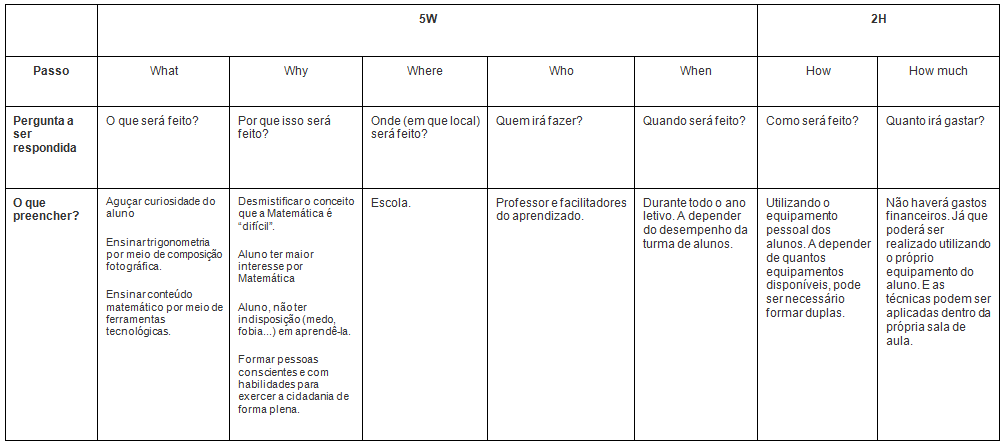
[1] Universidade Federal De Juiz De Fora-Graduate Course in Media in education

